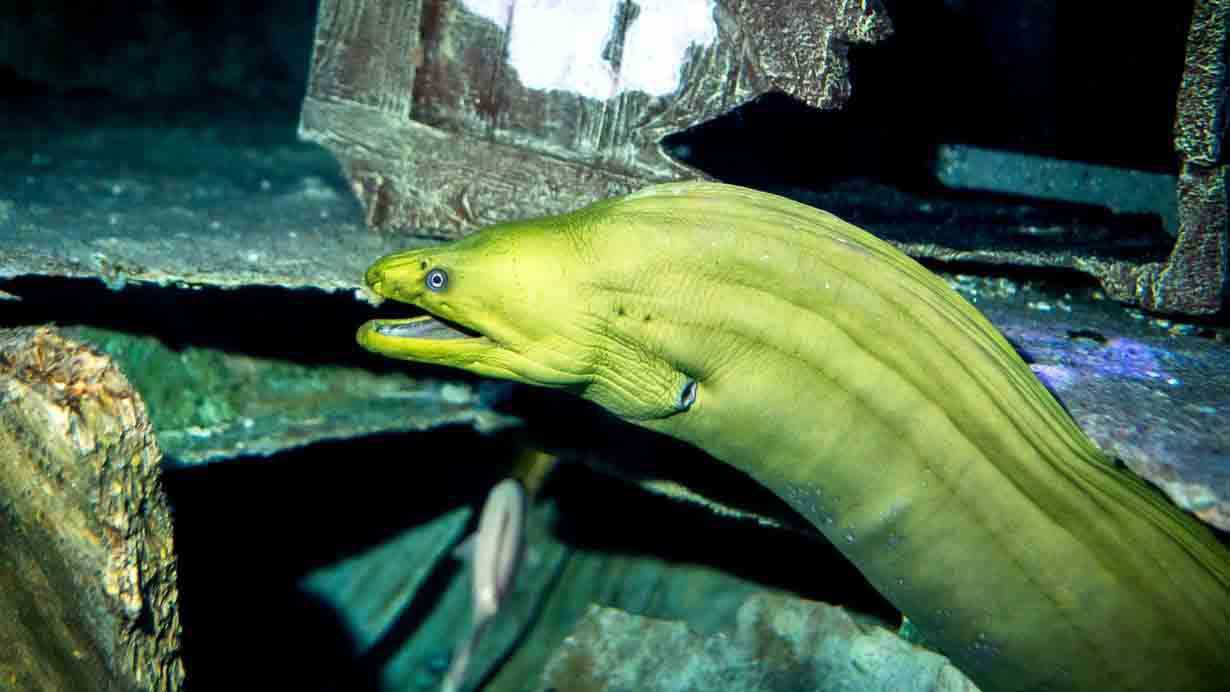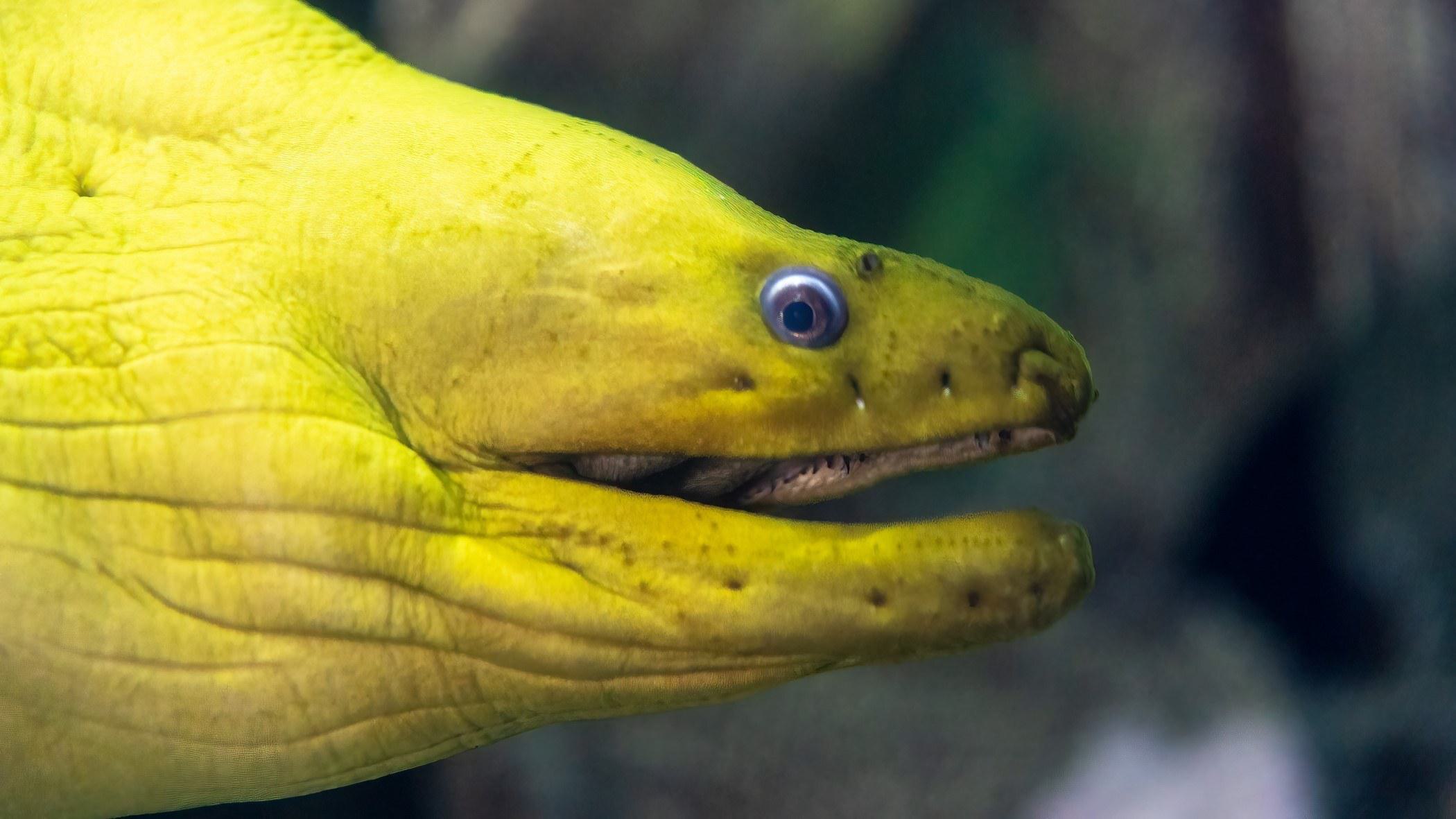Length: Average 5-6 feet, up to 8 feet
Weight: Average under 30 pounds, up to 65 pounds
Green morays are considered "true" eels and have a dorsal fin that extends from its head all along the back before fusing with the caudal (tail) and anal fins. They are often seen opening and closing their mouth, exposing two full rows of very sharp teeth on the upper jaw and a full single row on the lower.
Interestingly, their skin is not green! They are dark grey or brown, but are covered in a mucus that gives them their green appearance while protecting them from parasites and bacteria. Cleaner shrimp and gobies also help eat parasites, bacteria, and dead skin off an eel's body and from their mouths in a symbiotic relationship.
Diet
Known as top predators within their marine ecosystem, they hunt by lying in wait in rock crevices and coral reefs. Their keen sense of smell helps to detect prey swimming by, upon which they snatch the prey up and swallow it whole. If the prey is too large to consume whole, they will curl their bodies around the fish, tearing it into small pieces. While moray eels are opportunistic feeders that eat what swims by, some of their favorite foods include fish, shrimp, mollusks, crabs, and squid. If attacking an octopus, the moray can tie itself into a knot to avoid the octopus' grip.
Habitat
Green moray eels are normally found in warm tropical and sub-tropical saltwater, hiding in rock crevices or the nooks of coral reefs during the day.
Reproductive Behavior
The mating season runs from July to September. Fully mature female moray eels lay thousands of eggs at a spawning site during this time, but only some of the eggs will be fertilized by males. After spawning, both parents leave the eggs and future young to fend for themselves. The transparent ribbon-like juveniles (leptocephali) that emerge after several months proceed through three stages of metamorphosis before the cycle begins again.
Relationship With Humans
These eels, while territorial and capable of a harsh bite, rarely attack unless provoked and are generally calm animals when undisturbed. However, scuba divers and snorkelers exploring reefs must take care to avoid placing hands near crevices in the reefs without knowing what's in them.
Though some humans eat these eels, this can be dangerous as eels may ingest a type of plankton called dinoflagellates (or they may eat fish that consume dinoflagellates), which can cause a foodborne illness called ciguatera poisoning.
Back and Forth
Green moray eels are the only fish in the world that can swim both forward and backward!
Concerns
Climate change has led to the global destruction of reefs, which endangers the many marine species that call the reefs home, including these eels. Additionally, like all marine animals, green moray eels are highly impacted by environmental changes and the damage caused by unsustainable fishing and ocean pollution.
Celebrations
Green moray eels are not currently threatened and have few natural predators!





